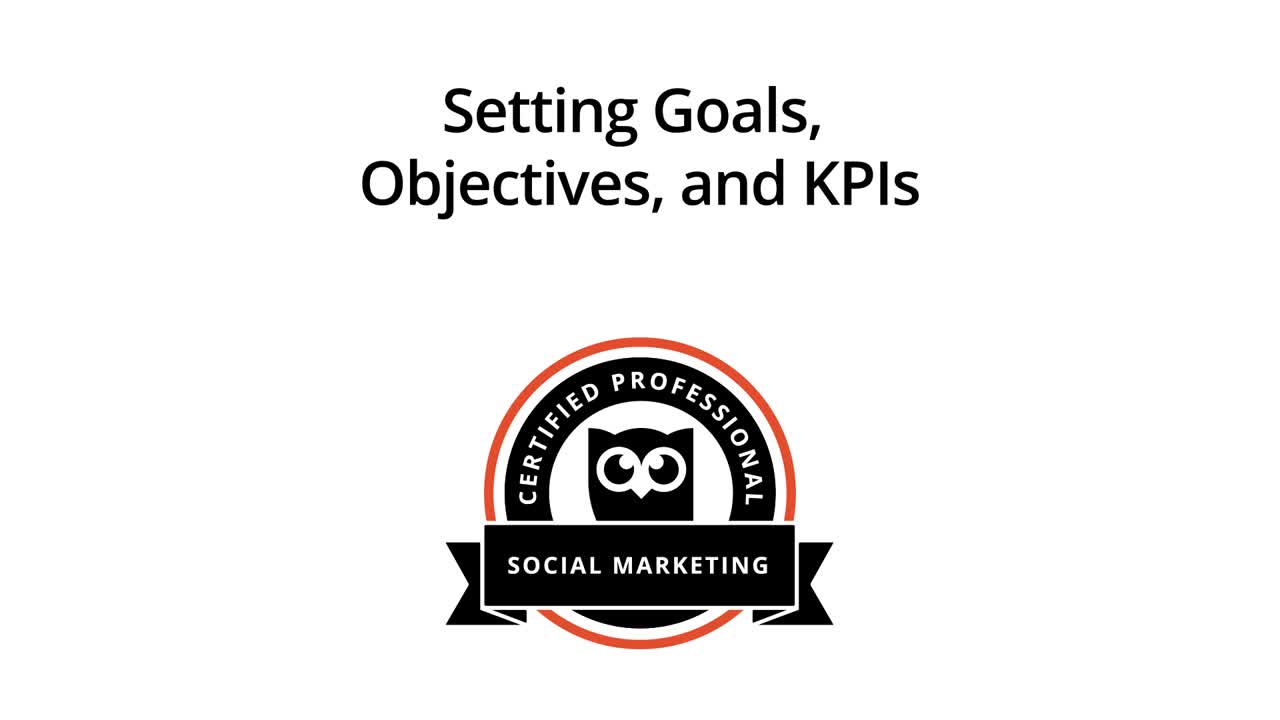Advance your social media skills and career
400,000+
Students educated
46,000+
professional
graduates
1,000+
SCHOOLS ENROLLED
Course Information
-
 Course Fee:
Course Fee:
$199
-
 Skill Level:
Skill Level:
BEGINNER
-
 Class Duration:
Class Duration:
6H
-
 This Class Covers:
This Class Covers:
SOCIAL MEDIA, MARKETING
Course Introduction
Take the Hootsuite Social Marketing course and develop foundational social marketing skills to grow followers, engagement, and business results.
Learning Objective
After watching this video, students will be able to create Social Media Goals and Objectives that support broader organizational aims. They will also be able to set the appropriate KPI’s necessary for tracking progress towards their goals and objectives.
Setting Goals and Objectives
The best social strategy is one that methodically outlines how social media will support your organization's broader initiatives. To do this, you’ll need to create a set of social media goals and objectives that clearly contribute to organizational success.
Begin by thinking hard about your organization and departmental goals, then formulate social media goals that explicitly support them. For example, if your organization has a goal to build awareness around a new hotel location, your social media goal might be as simple as increasing awareness of that new location among target customers on Twitter, Instagram, and Facebook. Once you settle on a social media goal, you’ll need to design actions that can support it; this is where objectives come in.
Social Media Objectives are specific measurable steps that will be taken in support of a Social Media Goal.
When designing objectives, refer back to the SWOT component of your social media audit, and then formulate objectives that play to your strengths and opportunities, while avoiding weaknesses and threats.
The SMART format should also guide the creation of social media objectives, so they’re optimized for achievement. Data contained in your social media audit will be helpful in crafting objectives that are achievable. For example, if brand mentions on Twitter only increased by 25% last year, a 75% increase this year is probably unlikely.
So, what are two SMART objectives that could support the goal to increase awareness of a new hotel location on social channels? One could be to drive a certain number of mentions of a relevant branded hashtag in the first two 2 months following the opening. Another could be to engage a certain number of local social media influencers to post about their experiences with the hotel in Q1.
Setting KPIs
Alongside your social media objectives, comes the process of choosing and setting KPIs, or Key Performance Indicators. When choosing a KPI, you are essentially homing in on the Measurable component of the SMART rule, asking yourself which metrics will let you determine whether or not an effort has been successful. KPIs, like your social media goals and objectives, should be based on what your team can actually do to influence the achievement of the Objective. That is, KPIs should only measure things that you and your team have direct control over.
Once you’ve established a KPI by choosing relevant metrics, you’ll need to settle on a target number that’s achievable, yet ambitious.
The best method for determining future targets is to establish benchmarks. You can do this by extrapolating data from past efforts to estimate future success. For example, if you’re partnering with a YouTube influencer, look at the view counts of their past videos and base your KPI target on that data.
Using data and benchmarking will help you to understand what to expect, and will enable you to set effective targets.
Looking for more? Checkout our Hootsuite blog post How to Set and Reach Social Media Goals (+ 10 Types of Goals to Track)

